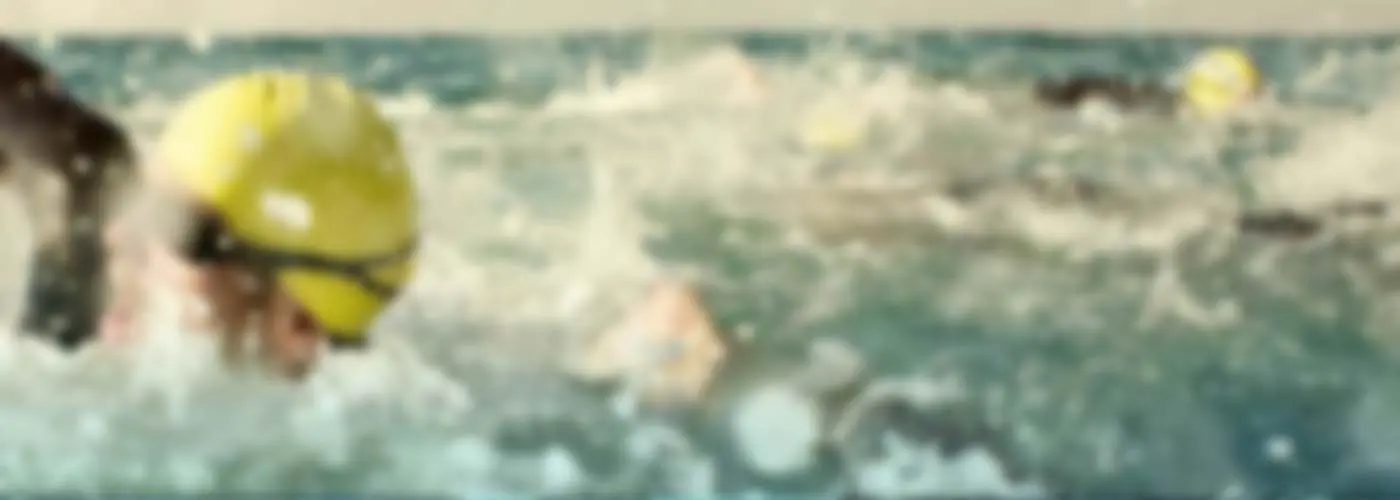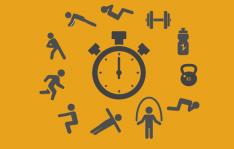For some triathletes, a need comes along where you want to breathe at will. That means no restriction of a breathing pattern due to freestyle or wasting energy swimming like Tarzan. The best solution for this situation is to roll over on your back and just float for a few seconds.
Because I want you to practice these skills before you need them, I'm giving you a couple of warm-up sets to hone your treading and back floating skills.
Treading Water
1 of 6
If you don't know how to tread water, do a Google search and you will find several instructional videos. When you do a search you will find there are several methods of treading.
Pick the one that feels easiest to start, then change it up as you gain skills.
If it makes you nervous to tread water, begin somewhere close to a lane line or the wall. Do your treading practice shortly after warm-up when you're relatively fresh. Begin by aiming to tread water for 10 seconds or so. As you gain skill, add time to your constant treading. Build up to between two and five minutes.
If you already have treading water skills, you can jump right to the first warm-up set:
Find:
Your Next RaceWarm-Up No. 1
2 of 6
Swim 300 to 500 on your own. Include swimming, kicking and a few drills. Then do:
On every 50 begin by swimming 12.5 to 25, until you are in deep water. At that point, stop and tread water for 10 seconds or count to 10. When you begin swimming again, don't use the lane line or the wall for help. Kick your legs, put your face down and get prone again by using your own propulsive power. Finish the 50. Take 10 to 20 seconds between each 50 to recover.
Options:
- Lift your hands out of the water for the odd numbered swims.
- Put your hands on the top of your head on the odd numbered swims.
- Pull your goggles off, seat them on your forehead, tread for a count of one-one thousand, two-one thousand. Reset the goggles on your eyes and begin swimming again.
Find:
Your Next RaceBack Float
3 of 6
The ability to float on your back and relax is a valuable skill. Some people could literally back float all day. I'm not going to ask you to do that, but I would like you to perfect a relaxed back float. Similar to treading water, if you are nervous about floating on your back, begin learning the skill near the wall, a lane line or in shallower water.
When on your back, minimize arm and leg movements to begin. See what happens when you tilt your chin to the ceiling more. What happens when you move your chin to your chest? Can you add minimal arm and leg movement to propel yourself, while using nearly zero energy?
Once you have the back float mastered, add it to your warm-up on occasion.
Find:
Your Next RaceWarm-Up No. 2
4 of 6
Swim 300 to 500 on your own. Include swimming, kicking and a few drills. Then do:
4 to 8 x 50: On every 50 begin by swimming 12.5 to 25, until you are in deep water. At that point stop, roll over and float on your back for the count of 3 to 5 seconds. You can skull water with your hands and add a minimal kick so you are moving in the same direction as you were before rolling over.
Be aware of where the wall is if you're in a 25 yard or meter pool. Know that the flags you see running across the pool give backstrokers warning that the wall is near. Good backstrokers know the number of strokes it takes them to reach the wall after they've seen the flags. After practice, you will gain a sense of where the wall is relative to the flags.
The last second or so of your count, begin kicking your legs. Grab a quick breath, then roll over and begin swimming freestyle again. When you begin swimming again, don't use the lane line or the wall for help. Finish the 50. Take 10 to 20 seconds between each 50 to recover.
Options:
- Begin the 50 on your back. Propel yourself about 12.5 by gently skulling and kicking on your back. Roll over and begin swimming.
- Alternate by doing back float on the odd-numbered swims and tread water on the even-numbered swims.
- Kick on your back for 12.5, roll over and kick on your front side for 12.5, swim the remaining 25.
Find:
Your Next RaceSkills, Confidence, Relaxation
5 of 6
As you gain the skills to tread water and float on your back, while expending minimal energy, you will find that your confidence in the water will increase and you can be more relaxed during open water swims. The knowledge that you can tread water and make goggle adjustments, if necessary, while staying relaxed is a skill to your advantage.







Discuss This Article